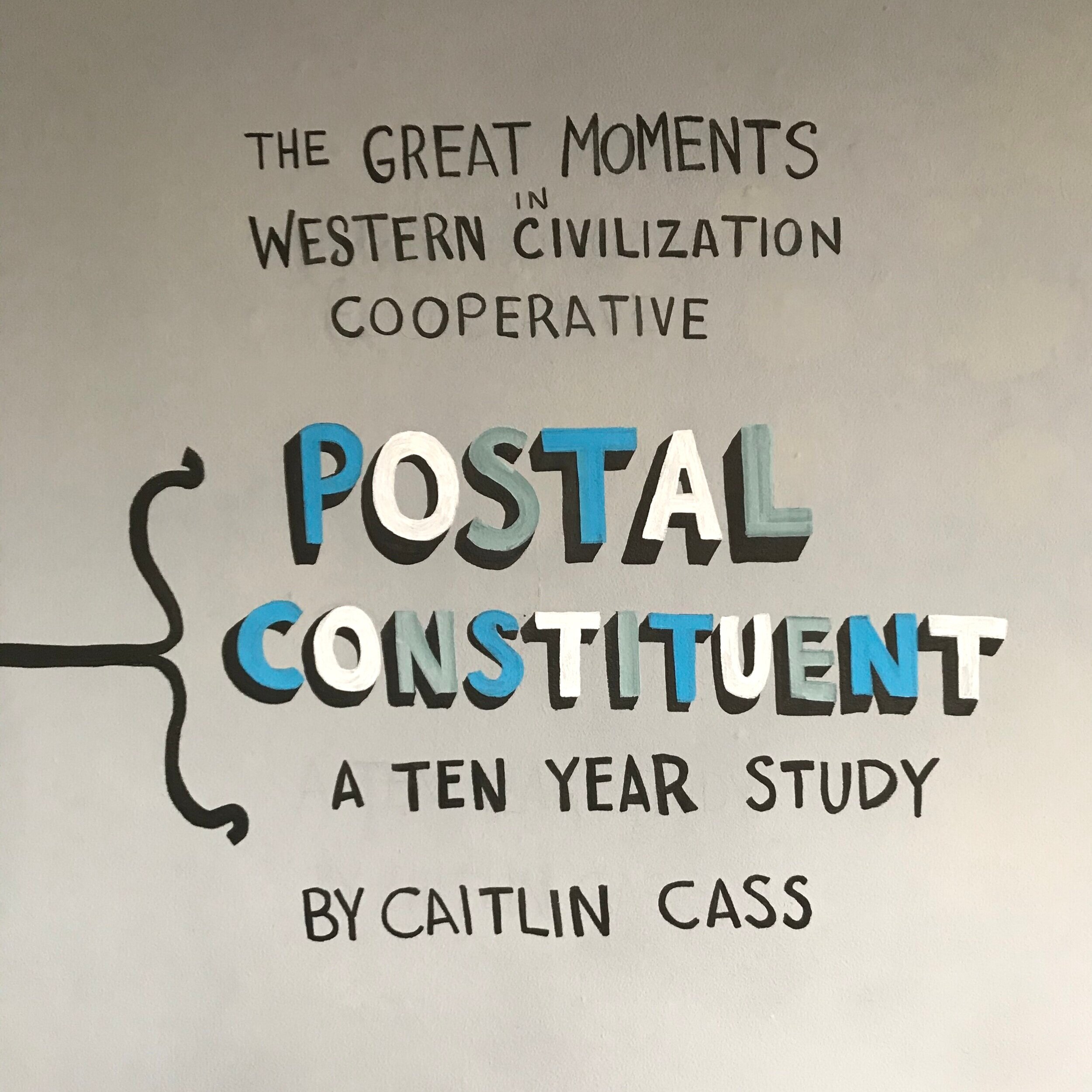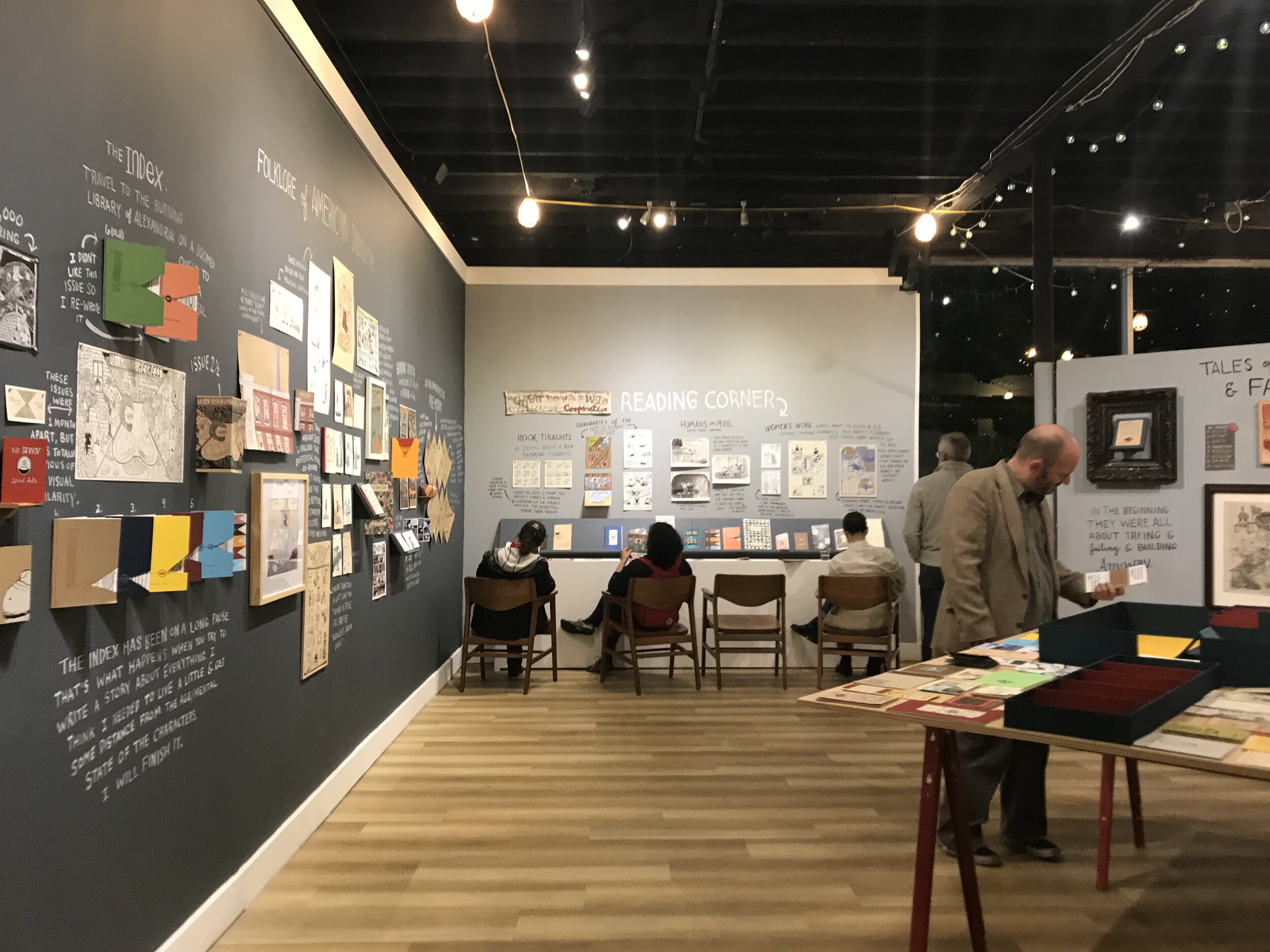Curatorial



March-September 2020
Networks, entangled by darya warner
I had the opportunity to not only curate, but work with and print alongside Darya Warner to produce her solo exhibition at WNY Book Arts Center. Initially scheduled to open March 13, 2020, the opening was cancelled due to the risk of COVID-19. The exhibition was hosted online, and the work was available for in-person viewing later in September. My curatorial statement is below, as well as a link to the online exhibition.
CURATORIAL STATEMENT
A recent trend in nutrition science prioritizes inner workings of the body that for decades have gone ignored - the microbiota, or, in terms I am personally more acquainted with, gut flora. Hitching a ride in all of us are millions (trillions?) of bacteria, fungi, and, yes, viruses, all working, thriving, and predominantly contributing to a mutually beneficial relationship - one that allows the environment we cohabitate to stay alive. This realization can be unsettling at first encounter: it opposes our understanding of humans as self-sustaining, free-willed individuals and instead positions us as blundering hosts to vast ecosystems of which we are scarcely aware.
With Networks, entangled, Darya Warner follows a similar posthumanist (humanity as decentered) idea through explorations of communal systems that exist at scales we are alien to: that of the fungi kingdom. Focusing on mycelium - the vegetative root structure from which mushrooms grow - Warner interweaves sound, algorithm, interactive installation, printmaking, paper-making, and mold to demonstrate the complexity of these unseen intelligent systems. Through this dense interdisciplinary practice, Warner’s work prioritizes the interconnectedness between human and fungal networks that sustain life.
My own connection to Warner’s work, through printmaking, shares this same necessity of communal and interactive creation. Printmaking by nature exists as a networked community of artistic practice and mutual responsibilities. Sharing studio space, bulky machinery, supplies, and experience, printmakers thrive in connection to one another, just as the mycelial networks in this exhibition thrive when activated by human encounters.
By presenting humanity as a small piece of a vastly entangled network, Warner displays the full potential we have for ecological and, ultimately, social change.
october 2019
CURATORIAL STATEMENT FOR “THE GREAT MOMENTS IN WESTERN CIVILIZATION POSTAL CONSTITUENT: A TEN YEAR STUDY”
Ten years ago today, it is 2009.
The terms “alt-right,” “anti-vaxxer,” and “gig economy” are first uttered. NASA discovers water on the moon. Swine Flu is a global pandemic (side note: it is 2009, I am a sophomore in college, lying half dead on a stained futon thanks to Swine Flu). Chain emails disputing President Obama’s citizenship are gaining steam, eventually leading to the platform upon which our now-current President built his political campaign (it is 2009, and yes, chain emails are still a thing). According to the National Bureau of Economic Research, the Great Recession has officially ended. It is 2009, and the Great Moments in Western Civilization Cooperative has formed (hereafter GMWCC) to set the record straight.
With the Great Moments in Western Civilization Postal Constituent, the GMWCC offers a side-eyed perspective on the cobwebbed, dusty, and (most-often) white-old-man-centric tales of our past. The Postal Constituent highlights both the obscure and the notorious figures of Western Civilization. We see Virginia Woolfe lamenting over the lack of heavy rocks along the river Styx, a “Build-Your-Own-History” where all causal chains stem from “Childhood Trauma,” and a modern day accumulated mound of immobile Americans simply referred to as the “heap.” The GMWCC offers a dark and satiric perspective on Western Civilization, tracing the mistakes and triumphs from decades past to the seemingly mirrored events of our present (and most likely of what’s yet to come).
This is history, future, present, and alternate realities, “reconstructed, retold, drawn, and printed” by Caitlin Cass.


